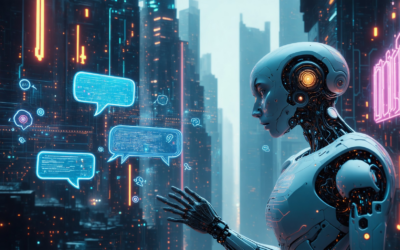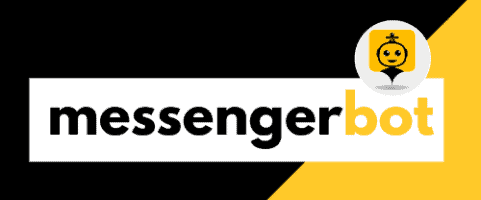In an interconnected world where language barriers can be the only thing standing between your brand and a wider audience, the advent of multilingual messenger bots has been a game-changer. Imagine a digital assistant not bound by linguistics, capable of breaking the confines of communication by simply understanding and conversing in the preference of its interlocutor. This isn’t a distant future; it’s here. Whether you’re mulling over how to give your chatbot the gift of tongues, curious how it could enhance your reach, or pondering if users really resonate with a bot that can ‘code-mix’, this article holds your answers. We’ll also delve deep into the capabilities of ChatGPT, unpacking how this advanced AI juggles multiple languages with ease. Join us as we explore the linguistic labyrinth and unveil how to traverse it efficiently, offering an unfettered connection to your expansive and diverse audience.
Can chatbots handle multiple languages?
Living in a multicultural world, linguistic versatility is key to effective communication. Fortunately, modern chatbots have evolved to match this need. So, yes, chatbots can indeed handle multiple languages, and this capability is transforming the landscape of digital interactions.
- 🗣️ Adapt to diverse user preferences by conversing in their native tongues.
- 🚀 Enhance user experience considerably by transcending language barriers.
The advancement of artificial intelligence and Natural Language Processing (NLP) has empowered chatbots to understand and process various languages, ensuring that your business can cater to a global audience. This agility in language switch-over represents a game-changer, with the potential to significantly amplify reach and bolster customer satisfaction.
How do I make my chatbot multilingual?
Crafting a multilingual chatbot may seem daunting, but it’s an investment that can yield profound outcomes for user engagement. Implementing multilingual support requires a combination of strategic approach and the right technological solutions.
- 🌐 Integrate advanced NLP software capable of recognizing and interpreting multiple languages.
- 🔧 Utilize dedicated translation APIs for seamless language conversion.
- 💬 Structure your bot’s dialogues and quick replies to cater to different language selections.
At its core, the key steps involve configuring the bot’s linguistic database and employing algorithms that not only translate but also appreciate language nuances. Training your chatbot with extensive data samples across various languages will enable it to recognize and respond aptly to multilingual user inputs.
Do multilingual users prefer chatbots that code-mix?
Users with multilingual backgrounds often interact in more than one language, seamlessly switching between them. This phenomenon, known as code-mixing, is where a chatbot’s ability to detect and mirror a user’s language preferences shines.
- 🤝 Code-mixing can promote a feeling of trust and personalization, leading to positive user experiences.
- ⚙️ Sophisticated algorithms allow chatbots to detect and adapt to code-mixed inputs.
These personalized interactions are valuable for building a rapport with users, enhancing customer loyalty, and reflecting cultural competence. Chatbots that can replicate this behavior tap into the user’s comfort zone, thereby increasing engagement and satisfaction rates.
How can a multilingual chatbot help to reach a vast audience?
In this global economy, a multilingual chatbot is a robust tool for businesses aspiring to expand their horizon. Breaking the language barrier serves as an invisible bridge that connects with millions of potential customers.
- 🌍 Instantly address the needs of a diverse customer base globalizing your service.
- 🛒 Tap into emerging markets with the power of native language communication options.
Not only does linguistics flexibility attract a wider audience, but it also facilitates clearer understanding, paving the way for an enhanced customer journey and, ultimately, more conversions.
Does ChatGPT support multiple languages?
ChatGPT is renowned for its human-like interactions and has seen incremental advancements including the support for multiple languages. With the technology backing such AI models being keenly focused on linguistic diversity, this enables more meaningful and broader exchanges.
- 🔠 Offering support for various languages extends the applicability of ChatGPT across different demographic specimens.
- 🎯 Facilitates accurate and context-aware conversations in multiple languages.
The goal of technologically robust assistants like our Messenger Bot is not just multi-language support, but a truly nuanced and culturally informed communication, ensuring that every interaction is smooth and natural.
How does ChatGPT handle multiple languages?
ChatGPT thrives on its complexity adherent NLP techniques which involve both language understanding and generation proficiency. These AIs are trained on vast text corpora representing a multitude of languages and idioms, enabling them to process multiple languages adeptly.
- 📖 Employ expansive datasets to imbue ChatGPT with an understanding of various languages.
- 🤖 Utilize sophisticated machine learning algorithms to empower the bot with functional bilingual or multilingual abilities.
The intricate word vectors and language models within ChatGPT allow it to not just translate but also appreciate cultural colloquialisms and interpret them in user interaction. This distinctive approach makes interactions with the Messenger Bot enjoyable and useful, regardless of where the user is or what language they speak.
As the world becomes increasingly interconnected, embracing the sheer scope of a multilingual chatbot like Messenger Bot not only propels your communication but also cements your position on the global digital tableau. Start your journey to creating an inclusive, adaptable, and conversationally immersive chatbot with our flexible plans. Begin now, and let the power of multilingual interaction drive your business forward. Ready for a test-drive? Sign up for our free trial and start scaling up your chat interactions by bridging language barriers!





